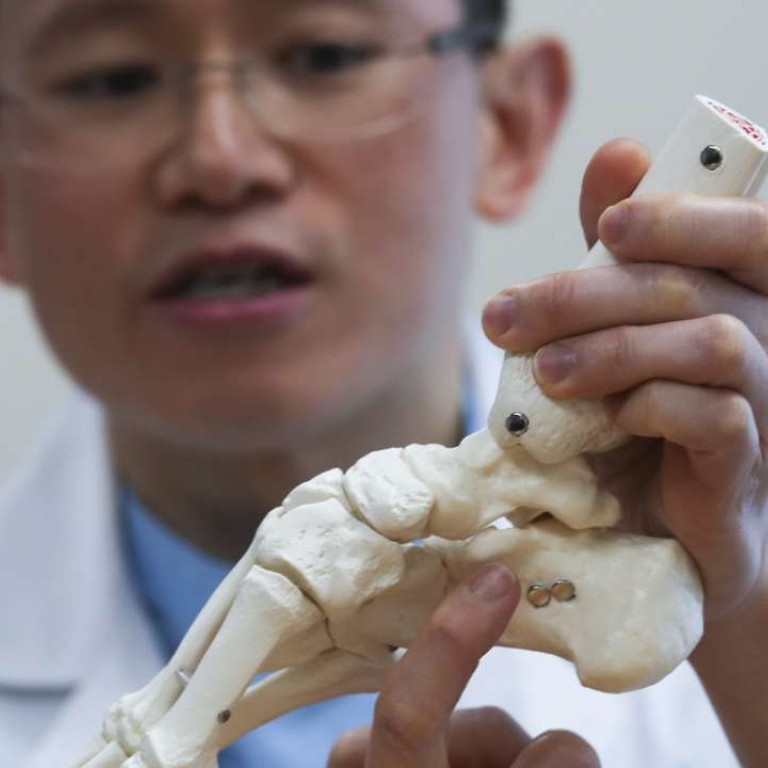
Ankle bone replicated with 3D printing technology in medical first for Hong Kong
Motorbike accident victim regains some mobility in left foot after implant
In a medical first for Hong Kong, doctors at Pamela Youde Nethersole Eastern Hospital have manufactured a replica of a talus – a small bone connecting the lower leg and foot – for a motorbike accident victim using 3D printing technology.
The anonymous 30-year-old patient sustained damage to his left ankle in the traffic incident on April 2015, resulting in the loss of his talus bone. Doctors said the part came loose in the injury, and could not be recovered at the scene.
The 3D printing technology was introduced for orthopaedic operations in public hospitals two to three years ago, but due to the rarity of the patient’s injury – doctors said there were only about 20 similar cases recorded worldwide – the reproduction of the talus bone was a first.
“Now we can produce more precise implants that are based on sizes of bones of different patients,” Dr Chiu Shin-yeung, a consultant at the hospital’s department of orthopaedics and traumatology, said.
Without the new technology, Chiu said doctors would have to connect the bones of the lower leg and foot directly, which would greatly reduce the patient’s ankle joint movement and lead to length discrepancy in both legs.
To reproduce the talus on the patient’s left foot, doctors first performed a computerised tomography scan on the right foot. A metal implant was then made with 3D printing based on the converted image from the scan.
While it took about only two weeks to design and print the replica bone, the patient received the implant only on the 16th month of treatment due to repeated inflammation.
Once the procedure was successful, mobility was restored to his leg and he could bend his ankle at an angle of 15 degrees, walking with the help of a support stick.
Chiu said many more orthopaedic surgeries, such as for patients suffering from bone cancer, could be enhanced with the technology in the future.
“We can reproduce a new bone in a patient’s limb from the scanned image on the opposite limb,” he said.
But he said that the technology, which required time to produce precise implants, was unsuitable for patients requiring emergency treatment.

